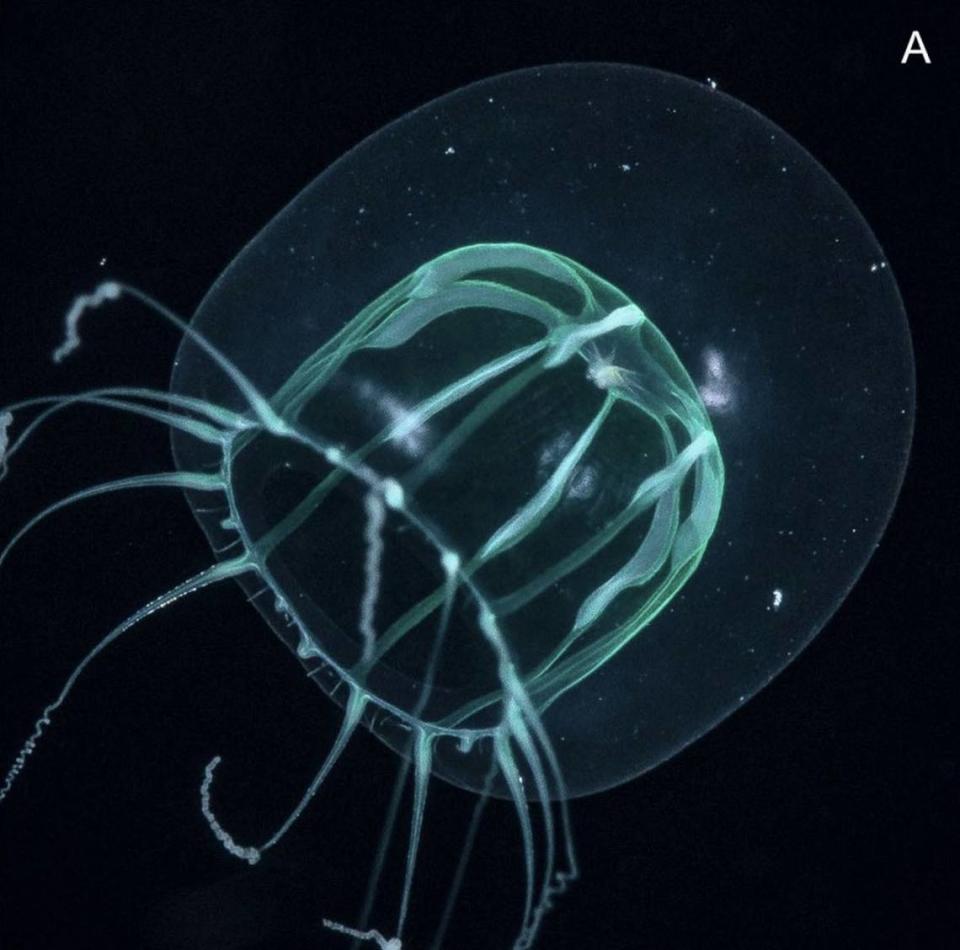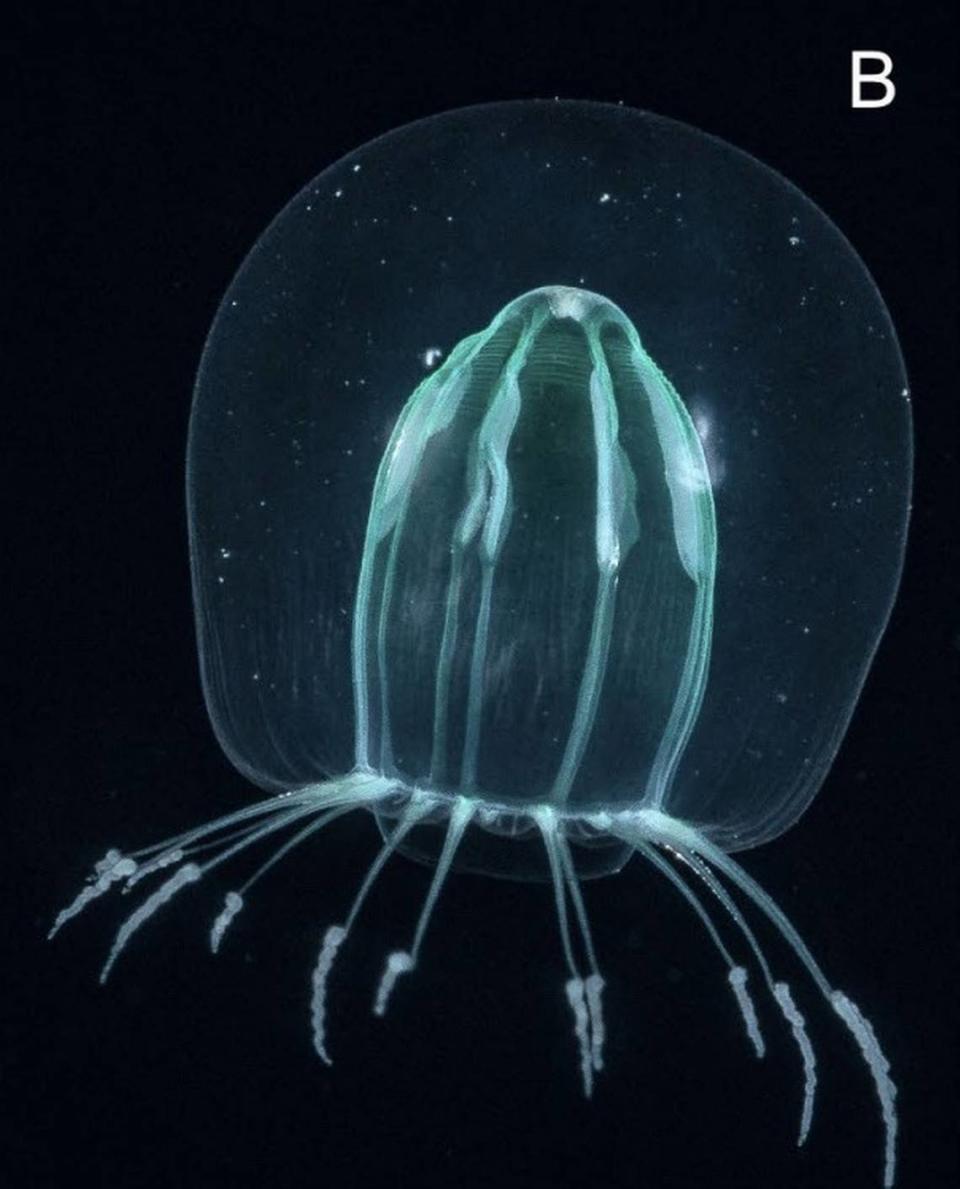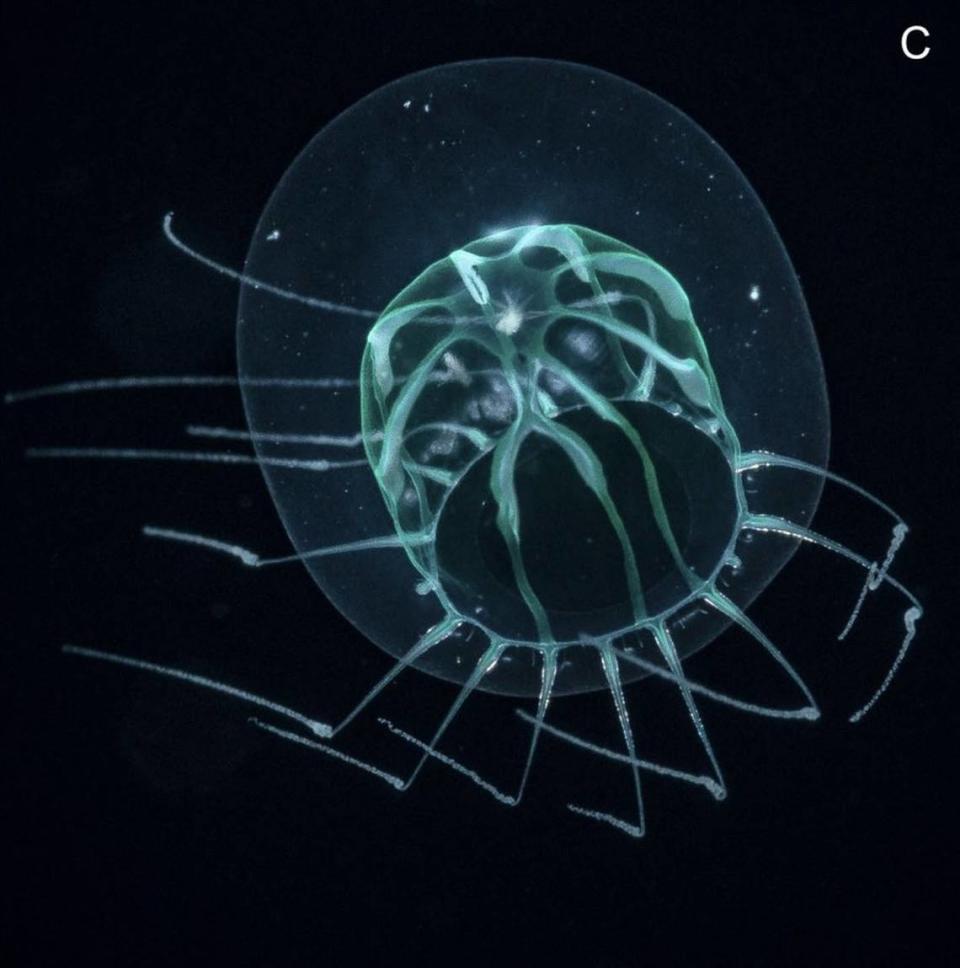Glowing sea creature with 15 tentacles found off Florida coast. It’s a new species
Scuba divers strapped on their gear and plunged into the darkened waters off the coast of Florida. Equipped with flashlights, the divers searched the ocean and spotted a glowing sea creature with 15 tentacles.
It turned out to be a new species
Peter Schuchert and Richard Collins surveyed marine life near Palm Beach during 91 nighttime scuba dives over the span of several years, according to a study published April 30 in the peer-reviewed journal Revue suisse de Zoologie. During their dives, they searched for a group of ocean animals known as hydromedusae.
Commonly referred to as jellyfish because of their appearance, hydromedusae are scientifically known as hydrozoans. These small colonial animals live in saltwater columns and only come to the surface at night, making them hard to find.
During their dives, researchers encountered nine unfamiliar-looking jellyfish, the study said. They photographed the glowing sea animals and captured a few. Taking a closer look, researchers realized they’d discovered a new species: Melicertum tropicalis, or the warm water jellyfish.
Warm water jellyfish are small, measuring roughly a quarter of an inch in length, the study said. They have a “bell-shaped” body with a “thick” outer skin and between “15 to 18 long tentacles.” Their mouths have eight “small lips.”

Discover more new species
Thousands of new species are found each year. Here are three of our most eye-catching stories from the past week.
→Deep-sea creature — with 'rectangular' shape — discovered
→Sea creature 'adorned with gold' found on coral in Philippines
→Clawed forest creature found lurking near temple in India
Mesmerizing photos show several Melicertum tropicalis jellyfish. The animals appear blue-green in color. The insides of their “bell-shaped” body look almost like a starry galaxy.
Researchers suspect the new species glows, or fluoresces, but they have not tested it yet, co-author Richard Collins told McClatchy News via email. When illuminated with white light, the animal “has a green hue.”

Like other hydromedusae, the new species uses jet-propulsion to move through the water, study co-author Peter Schuchert told McClatchy News. This process involves sucking in water then squirting it back out through a narrowed opening.
Although some hydromedusae species sting when touched, “Melicertum tropicalis is unlikely a stinger,” Schuchert said.
Researchers said they named the new species after its “occurrence in warm waters” because its closest relative prefers cold water, the study said.

The new species was identified by its tentacles, coloring, DNA, reproductive system and other subtle physical features, the study said.
Researchers also discovered a second new species of jellyfish and documented dozens of others.
“Part of the work we are doing is to demonstrate and document the amazing oceanic biodiversity here in Florida,” Collins said. “Florida waters are well-studied relative to most of the world’s oceans, and yet there is still so much to learn and discover.”
‘Rare’ ocean predator — with ‘blade-like teeth’ — seen off coast of UK, photo shows
Fanged creatures with ‘medically significant’ venom found in China. See the new species
‘Mysterious’ winged creature rediscovered in Taiwan after 87 years, study says. See it

